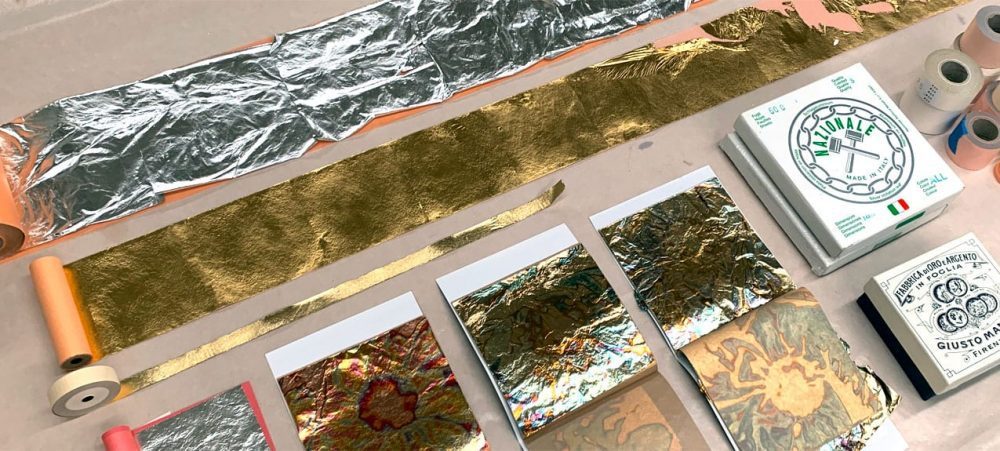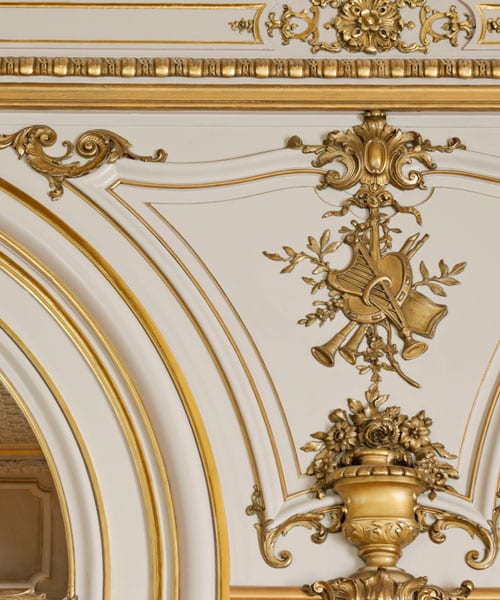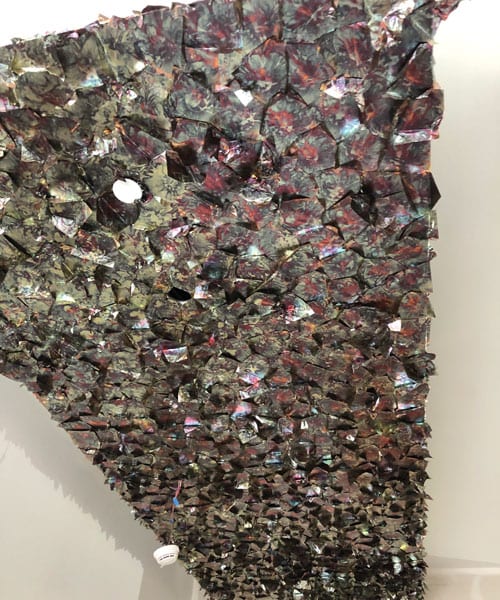Throughout history and all across the world, gilding with precious metals like gold and silver has been used to stunning effect in both exterior and interior architecture and design.
The term gilding also applies to other metals turned into leaf or powders, like copper, aluminum, palladium, and silver. Dutch metal, for example, is a form of brass made to look like gold leaf but less expensive.
Gilding can be found on every kind of decorative object – picture frames, furniture, sculpture, ceramics, etc. It always serves to elevate the viewers’ perception of value and importance. The same effect is true with architectural gilding.
REQUEST A CONSULTATION
Have Questions? How can we help? Tell us more about your project or what services you are interested in so we can connect you with the right person on our team.
Gilding Throughout History
Gilding was common in the Classic, Palladian, and Gothic architecture styles that were adopted and “revived” here in the US after the Civil War (mid 1800s) to the early 1900s. That period is referred to as the Gilded Age, when a few wealthy families compounded their riches during the industrial revolution because the trans-continental railroad made it possible to quickly ship steel and other goods to any part of the country.
Greed, political corruption and the resulting income inequality allowed the wealthy to build opulent homes in their favorite playgrounds and while all of these opulent structures have since endured their share of damage, neglect, and uneducated repair and restoration attempts over the years, historic photos provide a glimpse of what they once were.
At interior ornamental features, gilding is used to highlight and pick out details. Described as “flossing”, gilding is often found at column capitals, bead and reel mouldings, etc to accentuate the ornamentation and draw your attention to the grandeur of the space.
Not always gold leaf, elements can be gilded in different metals such as aluminum, palladium, copper, or silver or a combination of metals. The type of metal chosen takes into consideration the style of the design and intention of the space. A white metal, such as aluminum or palladium may be used a classically feminine interior while gold represents masculinity and strength.
For exteriors, a gilded dome is most recognizable. Gold leaf, in its purest form, is the strongest and most durable metal. While the leaf itself is millimeters thin, using the purest form of gold leaf will ensure it last for decades and withstands all elements.
The Gilding Process
A clean surface – plaster ornament, plaster or wood molding, or painted surface detail is coated with “size,” a clear or tinted liquid/medium that dries to a slightly tacky finish.
Metal leaf is transferred to the size and it is floated against the size and adhered to it. Once in place, it is lightly burnished into the sizing, forming a solid bond. Care must be taken to secure the bond, but not press too hard lest the leaf push into the size and lose its luster.
The next step is to brush, or burnish, away all the extra bits along the edges, taking great care to recapture the precious metal and leaving an almost seamless appearance.
[Re]Introducing Glamour
Gilding was employed to accentuate details, decoration, and craftsmanship. A delicately everlasting material, it signified prominence. Whether conserving, restoring, or selecting a type of leaf for a new design remember to consider the architecture and understand the true intent of its use.
Download a Copy of Our Brochure
Download a free copy of our brochure to learn more about each of the services provided by John Canning & Co.








